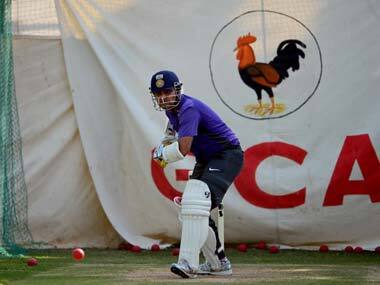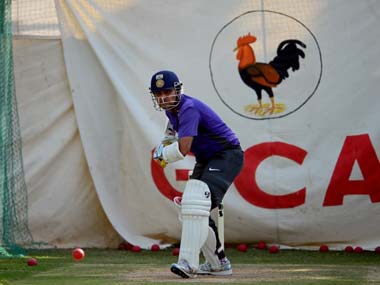It’s been a while since we last saw Virender Sehag’s unique brand of genius on the cricket field. The off-season gave him time to evaluate where he stood and what he needed to do to take his career forward. A career dogged by inconsistency over the last few years had taken him from all-time great to expendable entity, his strength (playing shots from the outset) had become his weakness, his mental resolve had morphed into stubbornness. So when Sehwag’s name was announced for the Delhi team that is taking part in the Challenger Trophy, there was a lot of curiosity. We had heard the news that Zaheer Khan and Yuvraj Singh had spent time training in France, we had also heard that Gautam Gambhir was playing in County cricket. [caption id=“attachment_1135301” align=“alignleft” width=“380”]  Virender Sehwag wants to make his comeback as a a middle-order batsman. AFP[/caption] But Sehwag’s approach had been different. He stayed at home – initially taking time away from the game – and then working on his game at the MFR Pace Foundation and seeking advice from Glenn McGrath, who is the director at the Foundation now. And then he told the selectors that if picked, he wants to be considered as a middle order batsman. Some might call Sehwag’s decision to bat lower down the order as an admission of weakness. But then others will remember that this is something he has always wanted. It’s just that before now, there was no space in the middle order. More importantly, it was a change in his thought process and that might be just the challenge he needs. The approach seems to have worked. When he batted against India Blue in the first match of the Challenger Trophy. His paunch is less visible, he seems calmer and still just as dangerous. Chasing 271 to win, Delhi were reduced to 7-2 after just three overs when Sehwag walked in to bat. Bhuvneshwar Kumar and Vinay Kumar, who have been playing for India in recent time and are by no means pushovers, had the new ball – which was moving a little as well. But Sehwag proceeded to hammer them all over the park. The first ball was just outside the off-stump, a little full and the right-hander needed no second invitation. A nice cover drive for four and he was off the mark. It was controlled. It was Sehwag. A couple of twos followed and he had eight runs in three balls. Vinay Kumar, India Blue captain after Yuvraj Singh was injured during the warm-up session in the morning, took over. But he got no respect either. Sehwag faced five balls – three dots, a four and six. The crowd roared it’s approval and selectors Sandeep Patil and Rajinder Singh Hans would have been more than interested. We’ve seen Sehwag get off to quick starts many times but could he make it count? More fours followed in the next two Vinay Kumar overs. Sehwag was, as he always has, making it look easy. Too easy. The bowlers seemed a little bewildered but they stuck to their original plan. Hoping, wishing that he recent run of bad form would come back and make it’s mark. But Sehwag wasn’t in the mood to give things away. He was not getting carried away – the odd ball would be left alone, still more were defended. When Sehwag was at his best, he would often get carried away (mostly because he could) and attack every ball he faced. Today, he was much more restrained – in that sense, he was feeling the pressure of the comeback. But by the time, he reached his fifty off 33 balls – that nervousness had dissipated and the rhythm of old was back. The fifty, his 56th fifty in List A matches, also included 7 fours and 1 six. By the time he was dismissed on 59 off 38 balls, he had surely made an impression. His dismissal to Iresh Saxena was the result of the bat twisting in his hand – he wanted to play against the spin but instead hit it straight back to the bowler. As far as first moves go, this was a good one – not as good as the Yuvraj century against West Indies A in the one-dayer – but good enough. But as it happens in chess, a good opening only gives you the advantage, you still need to win the game. And that is why for Sehwag, the game of comebacks is just beginning.
But by the time, Sehwag had reached his fifty off 33 balls – that nervousness had dissipated and the rhythm of old was back. The fifty, his 56th fifty in List A matches, also included 7 fours and 1 six.
Advertisement
End of Article


)

)
)
)
)
)
)
)
)



